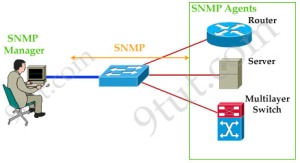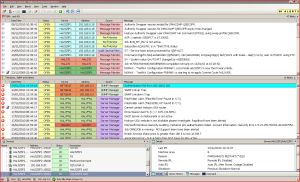To manage network and IT infrastructure properly, one requires capturing and examining packets of information sent on the networks, known as SNMP traps. These are PDUs (protocol data units) sent by diverse systems, devices and agents on the network utilizing the SNMP protocols and contain info regarding events occurring to those systems. This information is very important to a network manager and it is essential that a capable NMS (network management system) is installed to capture this data in real-time. The secret is to ensure the network management system is capable of understanding and resolving the information contained in the traps.
 There’re several layers of information in the trap, known as variable bindings (VARBIND) and the management systems should be able to correctly recognize each variable bindings. Each variable binding contains a piece of information known as OID (Object Identifier). Each OID is comprised by a sequence of number, and each depicts a unique entity in the universe.
There’re several layers of information in the trap, known as variable bindings (VARBIND) and the management systems should be able to correctly recognize each variable bindings. Each variable binding contains a piece of information known as OID (Object Identifier). Each OID is comprised by a sequence of number, and each depicts a unique entity in the universe.
To recognize the OIDs, an effective system should utilize a complete ASN.1 Database. It also assists to have a quality MIB complier built into the system so users can gather and load new ASN.1 MIBs into the system in case the NMS finds an Object Identifier that it doesn’t comprehend. The complier breaks through the text, collects the objects into completely qualified OIDs, and slots in the information and its dependencies into the database for later use by the system. The best management system have ways of mechanically getting MIBs from online libraries and bringing them together into the system, and that way the system can have mechanical determination and resolution of these SNMP traps.
Apart from compiling and getting MIBs, a good SNMP trap management system can also have a configuration of trap filters. These filters have in-built infor mation that enables the management system to recognize, categorize and arrange the information in a prearranged way. This is in fact the best means to deal with #SNMP trap PDUs, as it enables the system to work at a correct rate, particularly in the middle of a trap flood. These floods aren’t altogether uncommon, and the Network Management System should be able to deal with these in a timely and safe manner. Some of these systems have hundreds, even thousands of these filter definitions, and they can productively examine traps at a fast pace using de-duplication algorithms. As soon as these traps are received, and the Object Identifiers are recognized, the traps can be resolved accurately and then can be finally processed by doing the event correlation. The perfect SNMP trap solution can determine the situation and then within the situation look at the other possibly associated events that may be occurring also.
mation that enables the management system to recognize, categorize and arrange the information in a prearranged way. This is in fact the best means to deal with #SNMP trap PDUs, as it enables the system to work at a correct rate, particularly in the middle of a trap flood. These floods aren’t altogether uncommon, and the Network Management System should be able to deal with these in a timely and safe manner. Some of these systems have hundreds, even thousands of these filter definitions, and they can productively examine traps at a fast pace using de-duplication algorithms. As soon as these traps are received, and the Object Identifiers are recognized, the traps can be resolved accurately and then can be finally processed by doing the event correlation. The perfect SNMP trap solution can determine the situation and then within the situation look at the other possibly associated events that may be occurring also.
 mation that enables the management system to recognize, categorize and arrange the information in a prearranged way. This is in fact the best means to deal with #SNMP trap PDUs, as it enables the system to work at a correct rate, particularly in the middle of a trap flood. These floods aren’t altogether uncommon, and the Network Management System should be able to deal with these in a timely and safe manner. Some of these systems have hundreds, even thousands of these filter definitions, and they can productively examine traps at a fast pace using de-duplication algorithms. As soon as these traps are received, and the Object Identifiers are recognized, the traps can be resolved accurately and then can be finally processed by doing the event correlation. The perfect SNMP trap solution can determine the situation and then within the situation look at the other possibly associated events that may be occurring also.
mation that enables the management system to recognize, categorize and arrange the information in a prearranged way. This is in fact the best means to deal with #SNMP trap PDUs, as it enables the system to work at a correct rate, particularly in the middle of a trap flood. These floods aren’t altogether uncommon, and the Network Management System should be able to deal with these in a timely and safe manner. Some of these systems have hundreds, even thousands of these filter definitions, and they can productively examine traps at a fast pace using de-duplication algorithms. As soon as these traps are received, and the Object Identifiers are recognized, the traps can be resolved accurately and then can be finally processed by doing the event correlation. The perfect SNMP trap solution can determine the situation and then within the situation look at the other possibly associated events that may be occurring also.





0 comments:
Post a Comment